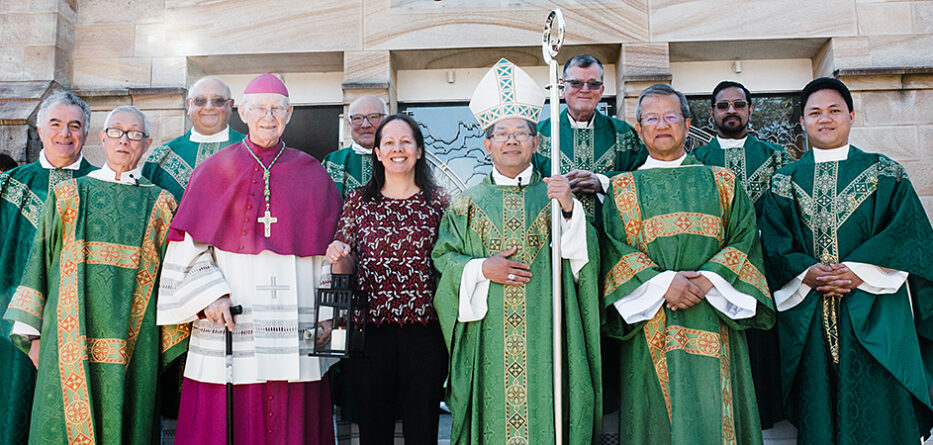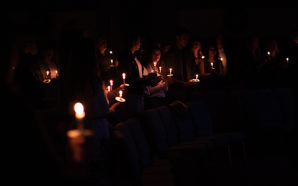Consecrated virginity is growing quickly in Europe and Central and South America. The vocation is spreading slowly but steadily in Asia and Oceania. As one of a few consecrated virgins in Australia, I decided to look at what Ecclesia Sponsae Imago (ESI), says on the theme of the XVI Ordinary General Assembly of the Synod of Bishops “For a Synodal Church: Communion, Participation and Mission” as it applies to consecrated virgins. ESI is the Vatican’s Instruction on consecrated virgins.
Communion
Consecrated virgins reflect the spousal relationship between Christ and the Church (ESI 2). The consecrated virgin is responsible to her diocesan bishop. She is to respond to his pastoral decisions. She is in communion with the intentions of the diocese and the universal Church (ESI 43).
The relationship between the consecrated virgin and the diocesan bishop is reciprocal. ESI 48 states that the bishop is to encourage consecrated virgins to joyfully live their vocation. He is to pastorally care for them and support them in ongoing formation. The bishop’s support includes when the virgin is ill, aged or is going through difficult times and to preside at the virgin’s funeral (ESI 49). As such, the bishop and the virgin are in communion through prayer and pastoral support.
Consecrated virgins are encouraged to network with other virgins for formation and support (ESI 55). They are in communion with each other, bringing their unique experience from dioceses around the world.
Mission and Participation
In 2016, at the Conference of the Year of Consecrated Life, the presence of consecrated virgins from dioceses around the world showed they shared in one ecclesial mission (ESI 9).
The spousal relationship between the virgin and Christ, through the Holy Spirit, enables the virgin to be a loving service to the diocese, the universal Church and the world (ESI 1). As a form of mission, the consecrated virgin’s example in their life of virginity shows absolute faith in the kingdom to come (ESI 17).
There are two forms of mission: contemplative and active (ESI 20). With contemplative mission, the virgin serves the local and universal Church through their prayer life (ESI 29-32). They pray for the needs of their diocese and the universal Church through the Liturgy of the Hours, the Eucharist, lectio divina and other forms of prayer. They pray for the needs of the poor, the marginised and sick and for the intentions of their diocese and the universal Church.
With active mission, their service to the Church is in supporting themselves in secular jobs (ESI 37 and 40). The consecrated virgin’s occupations, sporting pursuits and hobbies give simple witness to the presence and work of God, for the salvation of humanity.
They share in the intimate love and call to holiness, which is encouraged and available to all baptised (ESI 40). The consecrated virgin’s mission to the Church is shown in her mere presence in ordinary life. Her mission is “illumining, blessing, enlivening, raising up, healing, and freeing in their passion for proclaiming the Gospel, for building up the Christian community and for their prophetic witness of fraternal communion, in friendship offered to all, in caring proximity to the spiritual and material needs of the people of their time, in the commitment to work for the common good of society” (ESI 39).
In the rite of consecration of virgins, the virgin expresses the sanctum propositum (the holy resolution). This is the firm and definitive resolve to give the world a living witness of love and to be a clear sign of the future kingdom (ESI 19).
A consecrated virgin’s active and passive participation in the world in mission and communion in the diocese and universal Church shows the simple but valuable contribution the vocation provides.
The synodal Church is encouraged to celebrate the consecrated virgin’s presence in the Diocese. She is in prayerful communion with her Diocese and universal Church, and participates in the mission of the Church and society. ESI concludes by stating that “the Church recognises the revival of the Ordo virginum as a gift of the Spirit and welcomes it with gratitude” (ESI 114). My hope is that dioceses around the world, particularly in Australia, embrace the vocation and celebrate the contribution it makes to the synodal Church.
Zara Tai OCV is a consecrated virgin in the Diocese of Parramatta.









